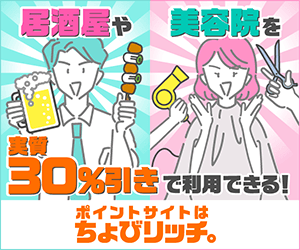Compared to the day of the Ox, the “Nanakusa-gayu” is a much more minor but well-known event food. It is an endangered event because children do not eat it because it is originally porridge, and there is no way to make it because they do not know what the seven herbs are in the first place.
In this article, we will explain the seven herbs porridge and examine how to get children to eat it in a good way.
What is Nanakusa-gayu?
Origin?
The origin of Nanakusa-gayu seems to be originally in China. Although it is not so familiar in Japan, January 7 is called “Jinki-no-Sekku,” and around the 6th century, there was a custom of eating something more like a soup than a gruel with seven kinds of greens, which is also the prototype of this custom. Its purpose was to ensure good health.
It seems that the purpose was similar to today’s custom of resting the stomach and intestines that were tired from eating and drinking too much during the New Year’s holiday.

In Japan, the custom of eating seven herbs appears in the “Otogi-zoshi” written in the Muromachi period (1336-1573) as a story from the Tang Dynasty (China), which suggests that the custom was already in existence at that time.
What are the seven herbs?
The seven herbs are: Japanese parsley, nazuna, gogogyo, hakobera, hotokezas, suzuna, and suzushiro. These are the seven grasses.
Not many people may be able to understand what the seven herbs are. I myself only remember that it was introduced on TV a long time ago, but it is not what I would call common knowledge. But don’t worry, in modern Japan, there is a convenient product on the market.

This chapter will explain the seven kinds of weeds, including some that are not distinguishable from weeds at a glance, and are usually treated as weeds.
Seri (Japanese parsley)
First of all, there is Seri. Seri, written in kanji (Chinese characters), is probably the most familiar. It is often mistaken for watercress, but in fact it is a different plant, although they are similar in taste and both are edible.

It is full of vitamin C, minerals, beta-carotene, and other nutrients that are difficult to consume on a daily basis but are considered important these days. It is used not only as an ingredient for improving appetite and preventing cancer, but also as a herbal medicine.
Japanese mustard (Brassica rapa var. nana)
Among the seven grasses, Japanese poppy is by far the most weedy. After all, they grow on roadsides.

It is also known as “penpengusa,” although it is a different species from the one included in this issue. If you are from the Showa era (1926-1989), you may remember tearing one off and spinning it around to make a “PENPEN” sound. Also, I have never heard of it in a good way, but it is famous as a grass full of negative images, such as the phrase “penpen grass doesn’t even grow” to describe the fact that it was taken away without any feeling (during robbery, recruitment, etc.).
It is a disgrace, but as a foodstuff, it is actually very good. Its main nutrients are vitamins K, B1, and B2, and it is also rich in iron, so in a sense, it can be called a supercompatible of spinach.
Specifically, it is said to be effective in preventing lifestyle-related diseases and cancer.
Gogyo
Gogyo is a plant of the Asteraceae family that you may not come into contact with in daily life. It is also known as “Hahakogusa. Written in Chinese characters, it is “Gogyo.

Its pretty yellow flowers bloom from spring to early summer, and some people may or may not be convinced that they are called “gogyo.

The green color of grass cake is now mainly made from mugwort, but it was originally made from gogyo. It contains high levels of potassium salts as well as flavonoids, and has a diuretic effect, helping to eliminate waste.
Hakobera (Hakobe)
Hakobera or hakobe is a white-flowered grass. If you write it in kanji, it is written in katakana because the font is too small to read it.

In the past, it was called “green food,” but nowadays it is used as a kind of vegetable to feed livestock and pets. Parakeets are especially fond of it.
It contains vitamins B and C, minerals, carotenoids, flavonoids, saponins, and other nutrients, and is also used as a toothpaste and gum massager.
Hotoke-noza (Sambucus nigra)
Hotoke-noza is a plant whose Chinese characters are written as “Buddha’s seat,” as you might imagine, even if you do not know its name.

Hotoke-noza also belongs to the Perilla family, but it is said to be poisonous, if not poisonous at all, and not edible. The seven spring flowers are the plants of the Asteraceae family, also known as “konitabirako.
It is said to be effective in preventing high blood pressure, stomach health, and intestinal regulation, but for some reason, there is no detailed description of its nutritional value.
Green leaves
The Chinese character for green leaves is green leaf, also known as turnip. It is one of the only vegetable among the seven herbs that is used regularly.
There is no difference between the two. They seem to refer to the same thing with the difference in the inspiration of their godparents: “Suzuna (green leaves) because its roots resemble a bell” and “Kabura (turnip) because its roots resemble a turnip attached to the end of an arrow to make a sound”.

In China, it is sometimes called “Shokatsusai” (諸葛菜), which comes from an anecdote about the famous “Zhuge Liang Kongming” who planted it in the battlefield to compensate for the lack of vegetables in the war.
Like radish, the leafy part of the sea squirt is full of nutrients, but since I only had the root part this time, I will only explain that part of the vegetable. Nutrients include amylase, potassium, vitamin C, calcium, iron, and folic acid. Amylase has a bowel-regulating effect, and iron and folic acid are effective in preventing anemia.
Suzushiro
At a glance, it looks like a mini daikon radish, but the correct answer is still daikon. Suzushiro” is the old name for daikon. The kanji character “蘿蔔” (蘿蔔) is no longer written as it should be.

The origin of the word is said to come from two sources: one is that it is a fresh white root, and the other is that it was treated as a substitute for turnip (turnip), which is a very crude name for radish.
It is a versatile food that can be used raw or cooked, and its nutritional value is high with vitamin A, C, dietary fiber, diastase, amylase, and flavonoids, which can relieve loss of appetite, headache, fever, sensitivity to cold, gastritis, etc. It is also good for headache, fever, cold, and gastritis.
Making Nanakusa Gayu (rice gruel with seven herbs)
I have explained what the seven herbs are, but I myself think to myself, “I don’t think anyone will eat it even if I make it. I think to myself, “I don’t think anyone will eat it (even if I make it).
Whether you are familiar with it or not, you can use vegetables as all the ingredients. I can’t even imagine my mother, who is a picky eater, especially with her children, actively eating it.
Therefore, I will try to arrange it in a way that makes it easier to eat while making a regular nana-kusa-gayu.
The purpose of this article is to let children eat the highly nutritious rice gruel with the seven herbs. Therefore
I will not make a rice gruel. Please do not eat it.
First, chop each vegetable. Although it is recommended to chop them finely, I chopped them a little coarsely in order to preserve the texture. This is not due to lack of knife skills.

Next, put the vegetables into the pot with the rice, mainly root vegetables.

After boiling the rice and adding leafy vegetables, the seven herbs gruel is ready to be served.
Arrangement #1: Simmering in soup stock
First of all, the lack of flavor is the reason why they don’t eat it, so I decided to simmer it in dashi (Japanese soup stock) instead of water.

You may not be able to tell the difference at first glance, but the water has a little color.
Arrangement #2: Add a beaten egg
I was concerned that if the only ingredient was vegetables, the color would be too strong for people to eat, so I decided to add a beaten egg to accentuate both the color and the taste.

If it is called egg porridge, it is safe to say that it is not yet a porridge.
Let’s throw in the seven leafy greens around here as well. You can see that the rice looks like rice from the Matrix, but suddenly it has added a touch of glamour.

Arrangement #3: Try adding something other than the seven herbs.
If they won’t eat the seven herbs alone, I decided to add some of the children’s favorite ingredients. I could have used anything, but I decided to add this one, which is not easily distinguishable from the others.

I sliced it thinly, and as you can see, it was impossible to tell which was tinny, which was whitebait, and which was scallop.

It came out fine.

Conclusion
That’s all for this time.
Nanakusa-gayu is a very good dish for health in inverse proportion to its name recognition and plainness.
As a result of the arrangement, about 4 servings of porridge were made, and they were all eaten. I suggested that, since it is a dish in any case, it would be better to incorporate the good parts and make it easy to eat, without sticking to the original form.




